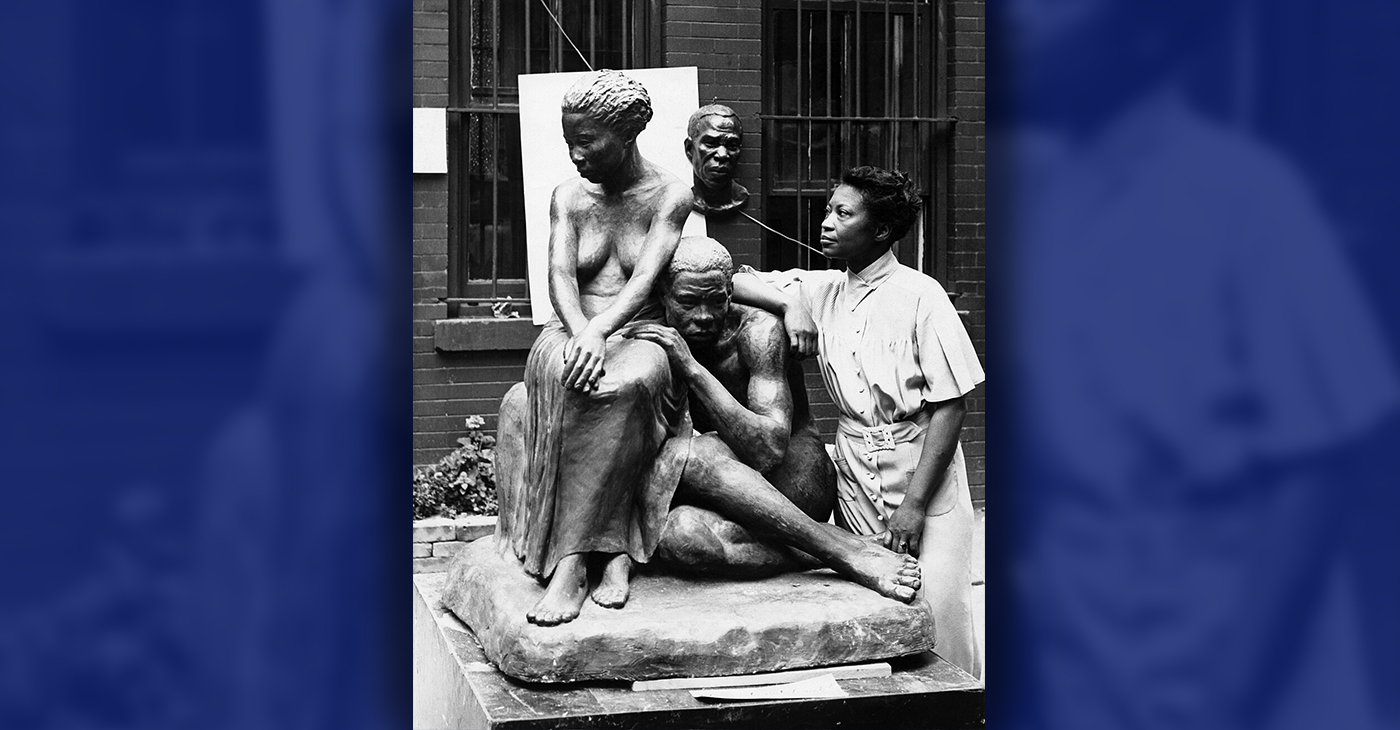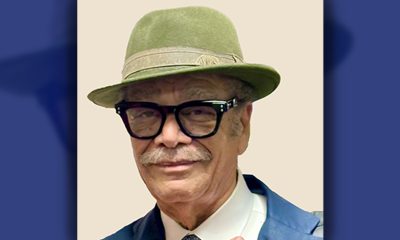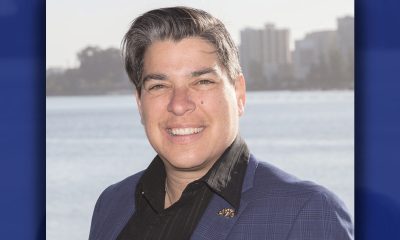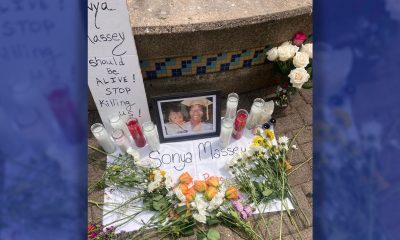Art
IU Northwest gallery shines a spotlight on high school artistry
CHICAGO CRUSADER — Indiana University Northwest invites the campus and community to view works of art by 59 area high school students.
Indiana University Northwest invites the campus and community to view works of art by 59 area high school students, on display from March 11 through 23 in the School of the Arts Gallery, located on the second floor of the Arts & Sciences Building.
In addition to the High School Biennial reception, scheduled for 5 to 8 p.m., Monday, March 18 in the gallery, the School of the Arts will also host an open house during the reception. Beginning at 6 p.m., attendees can view exhibitions and demonstrations as well as participate in ceramics, graphic design, printmaking, sculpture, photograph, and painting.
Attendees will be able to tour the School of the Arts facilities, including multiple artist studios, ceramic and sculpture studios, the photography lab, the campus radio station, two theatres, the woodshop, and art galleries.
The exhibiting students, who represent 15 area high schools, were chosen by their respective art teachers to exhibit their work in the gallery, giving them a unique opportunity to show their pieces at the university level and giving them a real-world gallery experience.
Shining a Spotlight on Arts in the Region
“In recent years, the gallery has presented exhibitions ranging from internationally recognized artists to IU Northwest graduating seniors,” said David Klamen, dean of the School of the Arts. “The region’s high schools have a long history of producing remarkable young artists who actively explore their own vision and experiences while immersed in our diverse local cultures. We are proud to exhibit their work.”
Klamen said that dedicating an exhibit to the work of high school students gives the campus an interesting collection of art work to contemplate and discuss, while also offering the community a glimpse of the creativity coming from neighboring art programs. Also, high school students, their families, and teachers will have the opportunity to visit the campus and see their work in a university context.
“Perhaps most importantly,” Klamen said, “exhibits like this remind the participating artists that art is not merely an academic exercise taught out of structured obligations. It is instead an exploration of our individual choices, preferences, and interests, and for many, the visual realization of our values and beliefs.”
This year’s exhibiting schools include: Hebron High School, George Rogers Clark High School, Chesterton High School, Valparaiso High School, Portage High School, Merrillville High School, Hammond High School, Crown Point High School, Highland High School, Michigan City High School, Munster High School, 21st Century Charter School (Gary), Lake Central High School, Hanover High School, and River Forest High School.
The School of the Arts Gallery is located in the Arts & Sciences Building, second floor. Hours are 1 to 5 p.m., Monday through Friday and 12 to 3 p.m. on Saturday March 18 and 23. All exhibits are free and open to the public.
For more information, contact Lauren Pacheco at 219-981-5627 or lpachec@iu.edu.
About Indiana University Northwest
One of eight campuses of Indiana University, IU Northwest is located in metropolitan Northwest Indiana, approximately 30 miles southeast of Chicago and 10 miles from the Indiana Dunes National Lakeshore. The campus has a diverse student population of approximately 4,000 degree-seeking students and 1,500 dual-credit students. The campus offers Associate, Baccalaureate and Master’s degrees in a variety of undergraduate, graduate and pre-professional degree options available from the College of Arts and Sciences, the College of Health and Human Services, the School of Business and Economics, the School of the Arts and the School of Education. The campus is also host to IU School of Medicine-Northwest-Gary, which actively involves students in research and local healthcare needs through its four-year medical doctorate program. IU Northwest emphasizes high-quality teaching, faculty and student research and engagement on campus and in the community. As a student-centered campus, IU Northwest is committed to academic excellence characterized by a love of ideas and achievement in learning, discovery, creativity and engagement. Indiana University Northwest is an equal opportunity/affirmative action employer committed to achieving excellence through diversity. The University actively encourages applications from women, minorities, veterans, persons with disabilities, and members of other underrepresented groups.
This article originally appeared in the Chicago Crusader.
Art
A Prolific Painter: Artist and Advocate Lois Mailou Jones
Lois Mailou Jones was a prominent African American artist whose career spanned more than seven decades, from the Harlem Renaissance to the modern art movement. She was not only a prolific painter but also an influential educator, bridging cultural gaps and challenging stereotypes through her vibrant and diverse works.

By Tamara Shiloh
Lois Mailou Jones was a prominent African American artist whose career spanned more than seven decades, from the Harlem Renaissance to the modern art movement. She was not only a prolific painter but also an influential educator, bridging cultural gaps and challenging stereotypes through her vibrant and diverse works.
Her unique journey of self-expression, dedication to art, and advocacy for African American and African themes made her a crucial figure in the evolution of American art.
Jones was born on Nov. 3, 1905, in Boston. Raised in an intellectual and supportive family, she demonstrated an early interest in art, encouraged by her mother, who believed in the importance of creativity. Lois studied at the School of the Museum of Fine Arts, Boston, where she faced racial challenges but persisted in pursuing her passion.
Her pursuit of higher education led her to the prestigious Design Art School, where she perfected her skills in textile design. Later, Jones attended Harvard University and received further training at the Académie Julian in Paris. This European experience greatly influenced her style and broadened her perspective on art.
Jones’s career began in textile design, creating works that were used by leading textile companies. However, her true passion was painting. During the Harlem Renaissance, she moved away from textile design to focus on fine art, exploring themes that reflected her heritage and the African diaspora.
Her early works were influenced by European Post-Impressionism, featuring landscapes and still life, but Jones’s style evolved over time. After spending time in Haiti, she was deeply inspired by Caribbean culture, and her palette became more vivid, her subject matter more symbolic. The influence of African and Caribbean culture is evident in her later works, where she used bright colors and geometric patterns to convey the spirit and stories of the people she encountered.
Her contributions to African American art were significant during a time when Black artists struggled for recognition. She often focused on themes of African heritage, pride, and unity, blending African illustrations and portraits with Western artistic techniques to create a unique visual language that celebrated Black culture.
She was also a dedicated educator. She began her teaching career at Palmer Memorial Institute in North Carolina and later became a professor at Howard University in Washington, D.C., where she taught for almost 50 years. Through her teaching, she influenced generations of young Black artists, encouraging them to explore and express their cultural heritage through art.
In the 1930s and 1940s, she worked to exhibit her work alongside other Black artists, helping to create a platform for voices that had long been excluded from mainstream galleries.
Recognition and Legacy
Jones achieved significant recognition throughout her lifetime, both in the United States and internationally. She exhibited her work across the globe, including in Paris, Africa, and the Caribbean.
Jones continued painting until her death in 1998, leaving behind a rich legacy of artistic achievements and contributions to art education. She broke boundaries by celebrating Black identity and heritage at a time when these themes were often marginalized.
Art
At Oakland Symphony’s 2024-25 Season Opening, Music Director Kedrick Armstrong Will Make History
Music Director Kedrick Armstrong will make history with his debut performance at the Oakland Symphony’s 2024-25 Season Opening Concert on Oct. 18, at 8 p.m. at the Paramount Theatre in Oakland. Armstrong, who is from Georgetown, South Carolina, is the ninth music director in the organization’s almost 100-year-history. His appointment follows in the footsteps of the late Oakland Symphony Music Director and Conductor Michael Morgan.

By Oakland Post Staff
Music Director Kedrick Armstrong will make history with his debut performance at the Oakland Symphony’s 2024-25 Season Opening Concert on Oct. 18, at 8 p.m. at the Paramount Theatre in Oakland.
Armstrong, who is from Georgetown, South Carolina, is the ninth music director in the organization’s almost 100-year-history. His appointment follows in the footsteps of the late Oakland Symphony Music Director and Conductor Michael Morgan.
Armstrong, 30, is not a new face to Oakland as he has been an active partner with the Oakland Symphony over the last few years both on and off-the-stage.
From 2022-24, Armstrong led three Oakland Symphony programs and guest-conducted the orchestra, showcasing his broad knowledge of the classical repertoire and enthusiasm for spotlighting diverse voices.
On his Oakland Symphony subscription debut on Feb. 16, Kedrick led the World Premiere of “Here I Stand: Paul Robeson,” an oratorio by Carlos Simon on a libretto by Dan Harder, commissioned by the Oakland Symphony.
On April 16, 2023, Armstrong conducted the Oakland Symphony’s Family Hype concert, presented in partnership with Ronald McDonald House Charities of the Bay Area. Armstrong first led the orchestra for a free “Summerstage at City Hall” concert at Oakland City Hall on Aug. 4, 2022.
The music program “Kedrick Armstrong Inaugural Inextinguishable Oakland!” will include commissioned works from master drummer Allison Miller and Bay Area artists – Ethiopian artist Meklit and Latin percussionist John Santos – in celebration of Living Jazz’s 40th anniversary.
Oct. 18 musical program:
Julia Perry: A Short Piece for Orchestra
Celebrate the 40-Year Anniversary of Living Jazz with three jazz-rooted compositions.
“Valley of the Giants” (for Eddie Marshall); Allison Miller, composer; arranged and orchestrated by Todd Sickafoose. Featured artist: Allison Miller, Drum Set; guest artist: Dayna Stephens, Saxophone.
Medley: “Ethio Blue, My Gold, Stars in a Wide Field”
Songs and Lyrics by Meklit; arrangement and orchestration by Sam Bevan. Featured artist: Meklit, Vocals; guest artists: Sam Bevan, Bass, Colin Douglas, Drumkit, Marco Peris Coppola, Tupan/Percussion.
“Un Levantamiento (An Uprising)”
Composer, percussion: John Santos; arrangers: Saul Sierra and John Santos. Featured artist: John Santos, güícharo, bongo; guest artists: Pedro Pastrana, Puerto Rican cuatro; Maria Cora, spoken word.
Carl Nielsen: Symphony No. 4, “The Inextinguishable”
Pre-concert talk by John Kendall Bailey begins at 7:05pm.
For tickets, go to: https://oaklandsymphony.my.salesforce-sites.com/ticket/#/events/a0SUu0000001rYXMAY
Art
Augusta Savage: A Sculptor, Activist and Renaissance Woman
Augusta Savage was a prominent sculptor and activist of the Harlem Renaissance, known for her artistic talent and dedication to encouraging and supporting African American artists.

By Tamara Shiloh
Augusta Savage was a prominent sculptor and activist of the Harlem Renaissance, known for her artistic talent and dedication to encouraging and supporting African American artists.
Augusta Christine Fells was born on Feb. 29, 1892, in Green Cove Springs, Fla. She later took the name of her second husband as her
Savage began sculpting as a child using natural clay found near her home. Her father, a Methodist minister, didn’t approve of her sculpting and did whatever he could to stop her. She once said that her father “almost whipped all the art out of me.” Despite her father’s objections, she continued to make sculptures.
When the family moved to West Palm Beach, Fla., in 1915, she encountered a new challenge: a lack of clay. She eventually got some materials from a local potter and created a group of figures that she entered in a local county fair. Her work was well received, winning a prize and along the way the support of the fair’s superintendent, George Graham Currie. He encouraged her to study art despite the racism she encountered.
In the 1920s, Savage moved to New York City, where she attended Cooper Union, a prestigious art school that provided free tuition. She excelled there, completing her studies ahead of time and receiving scholarships for living expenses. Despite being rejected for a summer program in France because of her race, she persevered, using the incident to highlight discrimination. She gained recognition during the Harlem Renaissance, creating sculptures of prominent African Americans, including W. E. B. Du Bois and Marcus Garvey.
In 1929, Savage received a Julius Rosenwald fellowship, which enabled her to study in Paris, where she exhibited her work at the Grand Palais, a famous exhibition hall and museum in the French capital.
When she returned to the U.S. during the Great Depression, Savage turned to teaching and founded the Savage Studio of Arts and Crafts, mentoring young artists like Jacob Lawrence and Norman Lewis. She played an active role in the Harlem Artists’ Guild and worked with the Works Projects Administration (WPA) to support struggling artists.
One of Savage’s most celebrated works was The Harp, created for the 1939 New York World’s Fair. Inspired by James Weldon Johnson’s poem “Lift Every Voice and Sing,” the monumental sculpture depicted twelve African American youth as the strings of a harp. Although it was highly acclaimed, The Harp was destroyed after the fair ended.
In her later years, Savage retreated to a quieter life in Saugerties, New York, teaching children and creating art as a hobby. She was married three times and had one child, Irene.
Savage passed away on March 26, 1962, in New York City after battling cancer. Although she was nearly forgotten at the time of her death, today Savage is recognized as a pioneering artist, educator, and advocate for African American art and artists.
-

 Alameda County5 days ago
Alameda County5 days agoAlameda County District Attorney Pamela Price Announces $7.5 Million Settlement Agreement with Walmart
-

 Activism3 weeks ago
Activism3 weeks agoCOMMENTARY: DA Price Has Done Nothing Wrong; Oppose Her Recall
-

 Activism2 weeks ago
Activism2 weeks agoOP-ED: Hydrogen’s Promise a Path to Cleaner Air and Jobs for Oakland
-

 Activism3 weeks ago
Activism3 weeks agoBarbara Lee, Other Leaders, Urge Voters to Say ‘No’ to Recalls of D.A. Pamela Price, Mayor Sheng Thao
-

 Activism3 weeks ago
Activism3 weeks agoOakland Post: Week of October 9 – 15, 2024
-

 Community2 weeks ago
Community2 weeks agoTerry T. Backs Oakland Comedy Residency by Oakland’s Luenell at Jimmy Kimmel’s Comedy Club in Las Vegas
-

 Business2 weeks ago
Business2 weeks agoStudy Confirms California’s $20/Hour Fast Food Wage Raises Pay Without Job Losses
-

 Activism3 weeks ago
Activism3 weeks agoSurge of Support for Vote ‘No’ on Recall of Mayor Sheng Thao
































































